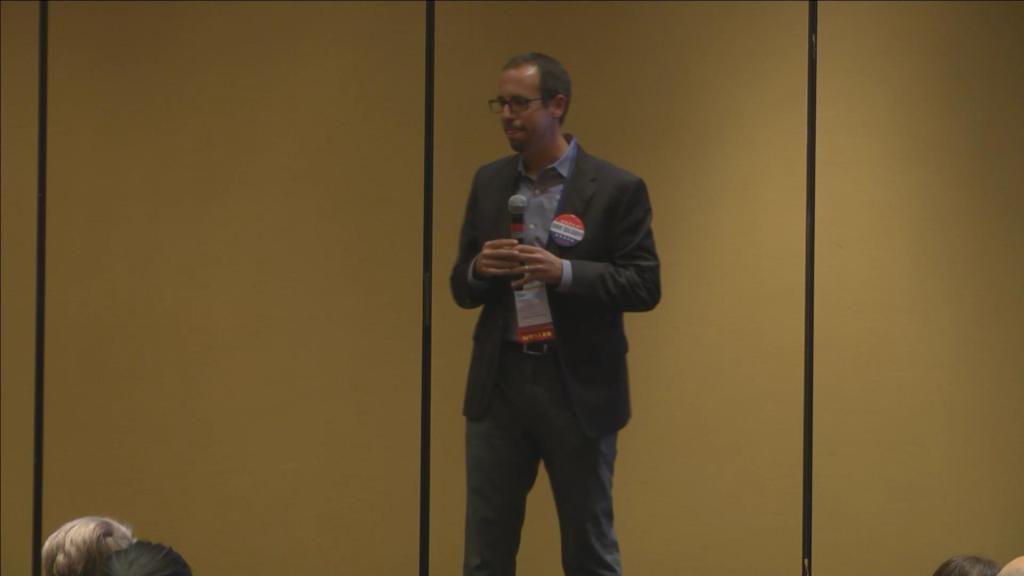2017 Lightning Talks
September 18, 2017
It’s electric! ONA is hosting an energetic round of community-pitched lightning talks, wherein registered conference attendees compete to present their Big Idea in Journalism. But they have to keep it short and sweet – five minutes, to be exact! For conference attendees, this is your chance to share something inspiring.
Journalists vs. Illusionists
Rick Weiss, Director, SciLine, American Association for the Advancement of Science
We all know that journalism is just the first rough draft of history, but ensuring at least a modicum of accuracy is becoming ever more difficult as technology empowers such advances as bots indistinguishable from real people and doctored photos and videos convincingly documenting events that never happened. Ten years from now journalism will be embroiled in an existential crisis, its value and future precariously dependent on its ability to do something that, until recently, anyone not insane or on mind-altering drugs could do naturally: distinguish between what’s real and what’s not. The stakes will be dizzying. In my lightning talk I will briefly describe some pending reality-obscuring technologies that will pose a daunting challenge to journalism and democracy—and explain why I believe we may soon hit an inflection point when today’s heady embrace of crowdsourced news may reverse itself in favor of trusted journalistic brands with the resources to recognize reality and hew to actual evidence in an age of high-fidelity facsimile.
Storytelling as a Cycle of Engagement
Lindsay Carbonell, web developer and reporter for EducationNC
Journalism isn’t just about writing a story and publishing it anymore — it’s about using our communication tools to bridge communities and policy makers. I’ll talk about what the new cycle of engagement will look like, and how all parties in the cycle can give and receive information. I’ll also talk about how automation and data analysis will allow the cycle to scale.
Meme Whispering
An Xiao Mina, Director of Product at Meedan and an affiliate researcher at the Berkman Klein Center for Internet and Society at Harvard University
In the past few years, memes have moved from fringe content to a central aspect of how information (mis-, dis- or otherwise) disseminates in the 21st century. In 10 years, memes (and the norms of internet culture more broadly: selfies, GIFs, emoji, etc.) will be central to how journalists operate. I’ll talk about that possible future, what’s necessary (hint: it’s about understanding culture as much as information), and what the risks are (hint: more misinformation, more problems).
Unleash Your :60 Storyteller
Jarrad Henderson, multimedia producer at USA TODAY
Did you know stories have shapes? Jarrad Henderson explores the concept and shows you how story shapes have evolved over time. Come learn how shapes, the art of the remix and practicing the A.I. Technique can help you become a master storyteller!
One Size Does Not Fit All
Don Sena, editor-in-chief/senior director of the Information & Content Experiences Team at Microsoft
In order for journalism and our digital publications to resonate more with audiences, we must embrace all forms of personalization. But that does not mean having engineers in one room building algorithms and journalists in another room building content. We as journalists must embrace getting our hands dirty with algorithms and machine learning, and publishers must hire engineers to be part of their newsroom. This important work entails newsrooms putting together a team made up of engineers, database specialists and journalists to create a personalization system that will increase engagement of our content, but also not swing the pendulum too far so the machines redirect our tone and voice. Making this partnership happen in an elegant way is key to the relevance of our publications. And, in the not-so-distant future, we will require more journalists with deep AI training and more engineers that understand content, tone and topic hierarchy. These hybrid journalist-engineers should be staples in our newsrooms in the near future.
Get School’d: Why newsroom training is vital to the future of your newsroom
Callie Carmichael, Digital Learning Specialist Cox Media Group
This talk will focus on why journalists have an obligation to continue to learn and teach each other digital best practices and evolving technology. I’ll explain the role of the digital learning expert and how this role will become every journalist’s role in ten years. The tools we use today will not exist ten years from now which is why it’s essential for journalists to incorporate digital training into everyday workflows.
How you’ll receive and perceive your weather forecast in 10 years
A. Camden Walker, Engagement Lead & Meteorologist at Capital Weather Gang with the Washington Post + Camunications LLC
Meteorologists and weather journalism aren’t adapting fast enough to mobile technology and actually discussing the weather in a two-way conversational format OUTSIDE in the weather; here’s how the field needs to evolve.
Newsrooms as authentic members of online communities
Anna Kim, Head of News & Journalism at Reddit
In the next 10 years, newsrooms are going to deepen their engagement with online communities. My job will shift from helping you find pre-viral content and navigate community culture to supporting a newsroom strategy that’s intricately tied to the online communities you’re active in. It won’t be enough to know what OP, AMA or ELI5 means. In 10 years, we’ll be tackling how to be truly accessible and responsive to communities, how to maintain a pulse on where the community is headed and how your role evolves as a community member with access and authority.
What the rise of video and digital journalism might look like ten years from now
Ali Rizvi, journalist with the McClatchy video lab
What if you are really into creating online video, or non-fiction filmmaking, and you don’t want to work for a news organization/cable channel? Well, if it was ten years from now, you’d be the type of journalist in demand, around the world.
Let’s Eat, ONA
Jamila Robinson, Regional Features Content Strategist for Gannett New Jersey
Lifestyle and entertainment coverage is evolving from what to do to how to do it. Knowing your audiences entertainment habits and building content around things to do helps to build community engagement, brand loyalty and strengthens reporters’ expertise. Jamila Robinson will discuss how to turn dining into a winning strategy.



